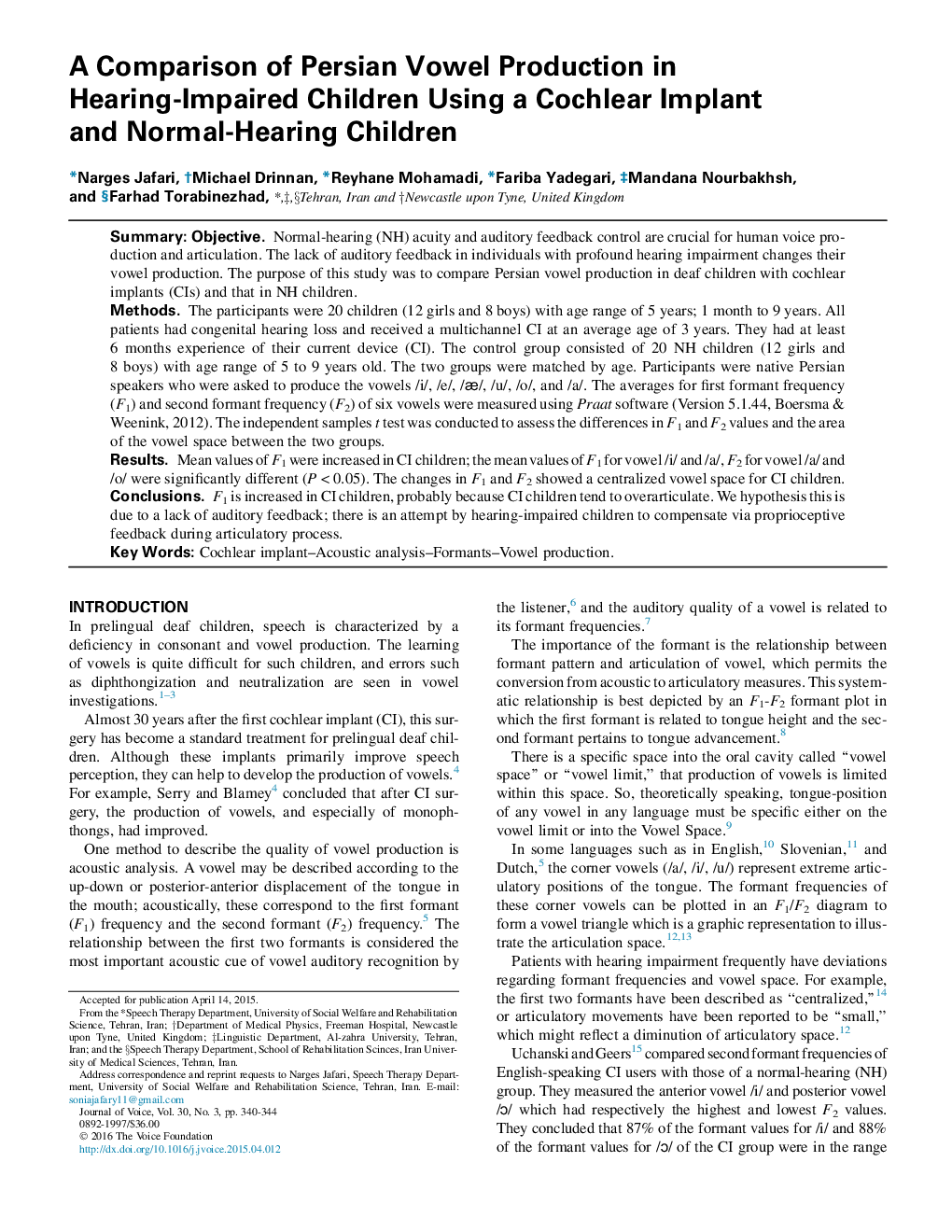| Article ID | Journal | Published Year | Pages | File Type |
|---|---|---|---|---|
| 1101347 | Journal of Voice | 2016 | 5 Pages |
SummaryObjectiveNormal-hearing (NH) acuity and auditory feedback control are crucial for human voice production and articulation. The lack of auditory feedback in individuals with profound hearing impairment changes their vowel production. The purpose of this study was to compare Persian vowel production in deaf children with cochlear implants (CIs) and that in NH children.MethodsThe participants were 20 children (12 girls and 8 boys) with age range of 5 years; 1 month to 9 years. All patients had congenital hearing loss and received a multichannel CI at an average age of 3 years. They had at least 6 months experience of their current device (CI). The control group consisted of 20 NH children (12 girls and 8 boys) with age range of 5 to 9 years old. The two groups were matched by age. Participants were native Persian speakers who were asked to produce the vowels /i/, /e/, /ӕ/, /u/, /o/, and /a/. The averages for first formant frequency (F1) and second formant frequency (F2) of six vowels were measured using Praat software (Version 5.1.44, Boersma & Weenink, 2012). The independent samples t test was conducted to assess the differences in F1 and F2 values and the area of the vowel space between the two groups.ResultsMean values of F1 were increased in CI children; the mean values of F1 for vowel /i/ and /a/, F2 for vowel /a/ and /o/ were significantly different (P < 0.05). The changes in F1 and F2 showed a centralized vowel space for CI children.ConclusionsF1 is increased in CI children, probably because CI children tend to overarticulate. We hypothesis this is due to a lack of auditory feedback; there is an attempt by hearing-impaired children to compensate via proprioceptive feedback during articulatory process.
